ARTICLE AD BOX

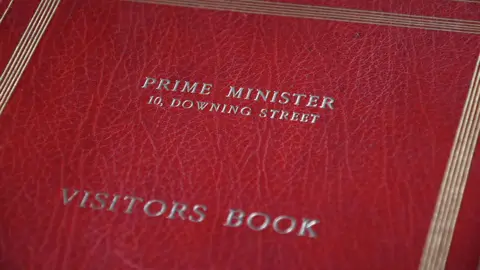 BBC
BBC
Visitors' books from Downing Street signed by some of the most famous figures in recent history have been made public for the first time.
World leaders and members of the Royal Family are among the names in the three red leather, gilt-tooled volumes being released by the National Archives, spanning 1970 to 2003.
The names of visitors to No 10 are not made public so the books provide a valuable record of who had private conversations with prime ministers.
One of the volumes was offered for sale earlier this year by a London auction house who said it had been rescued from a waterlogged basement by a former civil servant, but the government blocked the sale saying it was Crown property.

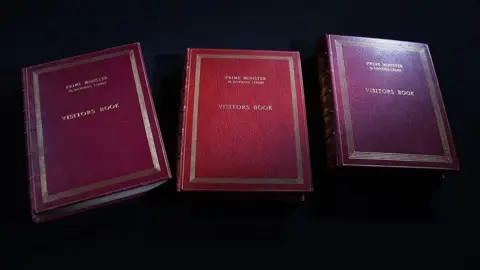
Dr Jack Brown, lecturer at King's College London described the books as "wonderful... historical novelties".
As the first resident researcher at No 10, he explained the book wasn't left on a table for everyone to sign, but only offered to special guests.
Some left private messages, especially to Margaret Thatcher, who spent more than a decade in Downing Street from 1979 to 1990.

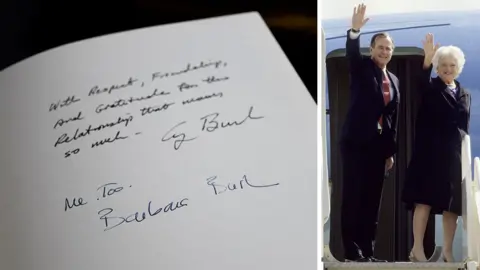 Getty Images
Getty Images
US President George W Bush and First Lady Barbara Bush signed while on a visit to London in 1989
In 1989, then US President George Bush wrote: "With Respect, Friendship and Gratitude for this Relationship that means so much".
Dr Brown said he was referring to the so-called special relationship between Britain and the US, rather than a personal bond, but President Bush's wife Barbara also signed, adding: "Me. Too."
Relations with fellow EU leaders were not always so smooth.
That same year the French Prime Minister Michel Rocard wrote: "It always is an extraordinary occasion to confront with the Prime Minister, especially when we agree, even when we disagree. Thank you very, very much."
"That was wonderful," said Dr Brown, "I think you did confront with Thatcher... particularly if you were a socialist French prime minister, towards the end of her term."

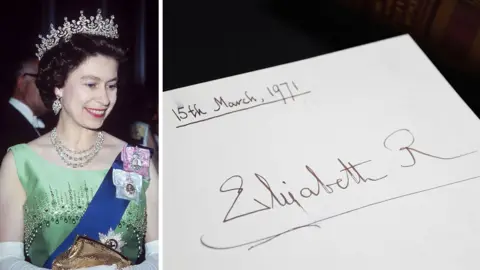 Getty Images
Getty Images
Queen Elizabeth II was among the first to sign, in March 1971
The visitors' book seems to have been introduced by the Conservative Prime Minister Edward Heath, who was in office from 1970-1974.
Among the earliest to sign it were members of the Royal Family, who left just their first name, including in March 1971 an entry which reads "Charles", from the then Prince of Wales, and 12 days later his mother signed "Elizabeth R".
A fortnight later it was the turn of her sister, "Margaret".
Many Asian and African leaders signed the first volume. One name from 12 July 1971, in uneven letters reads: "General I Amin Dada" – Idi Amin of Uganda.
Amin had taken power in a coup six months before, and the brutal nature of his regime wasn't yet clear to Western governments. In 1971 he was invited to Buckingham Palace, as well as Downing Street.
Just a year later, Amin expelled tens of thousands of Ugandan Asians, giving them only 90 days to leave the country. Many held British passports and came to settle in the UK.

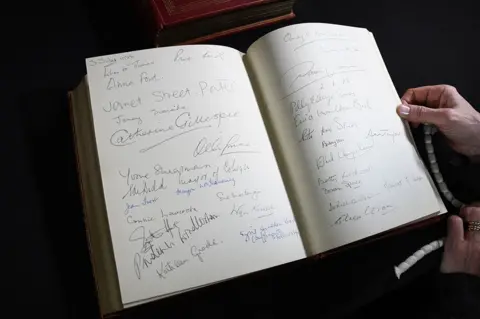
Among the world leaders - including Jimmy Carter, Ferdinand Marcos and Indira Gandhi - is an anomaly, four pages packed with signatures of well-known British women of 1978 - Anna Ford, Cleo Laine, Prue Leith and Janet Street-Porter.
The latter was a well-known face on TV, but Janet Street-Porter remembers being intimidated by the event, a reception to mark 50 years of equal suffrage.
"I always appeared cocky and self-assured," she said, "but to be invited to Downing Street for something so historically important was quite a formidable experience for me."

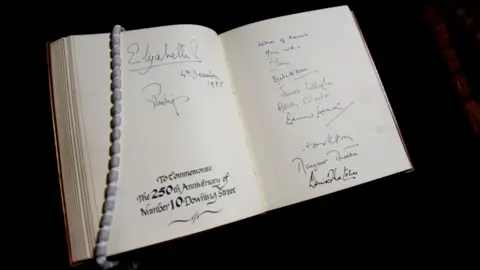
While there were many receptions in Downing Street, the book was brought out for very few – including to commemorate the 250th anniversary of Downing Street in 1985.
The Queen and Prince Philip signed, as did six other prime ministers, including the increasingly frail Harold Macmillan, Lord Stockton.

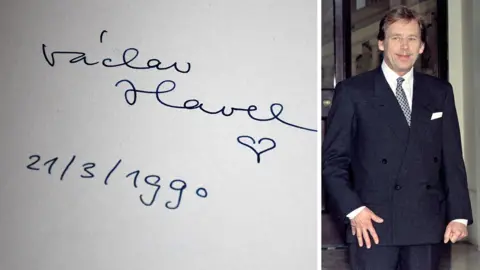 Getty Images
Getty Images
Czech statesman Vaclav Havel, the first leader of Czechoslovakia after the fall of communism, signed while on a three-day visit to the UK in 1990
The book captures the changing times: President Mikhail Gorbachev signed in April 1989, when he came for a state visit with his wife, Raisa.
Early the following year, the leaders of the newly independent Eastern European countries visited No 10 - including Vaclav Havel of Czechoslovakia, who added his trademark little heart.

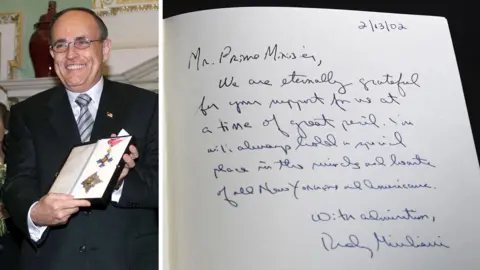 Getty Images
Getty Images
Former New York Mayor Rudy Giuliani signed while in London to receive an honorary knighthood for the role he played in the wake of the 9/11 attacks
The book seems to have been rarely used by John Major and Tony Blair, though there is one striking message from early 2002, a few months after the 9/11 attacks.
Former New York Mayor Rudy Giuliani wrote: "Mr. Prime Minister, we are eternally grateful for your support for us at a time of great peril, you will always hold a special place in the minds and hearts of all New Yorkers and Americans."
Dr Brown said "despite being a seemingly semi-random collection of autographs", the book was a "story of Britain's place in the world" told in these signatures over time.
Janet Street-Porter, who has visited Downing Street several times since 1978, thinks all guest lists should be published.
"Then you can see who's getting close to the centre of government and who has the ear of the prime minister."

 3 days ago
5
3 days ago
5
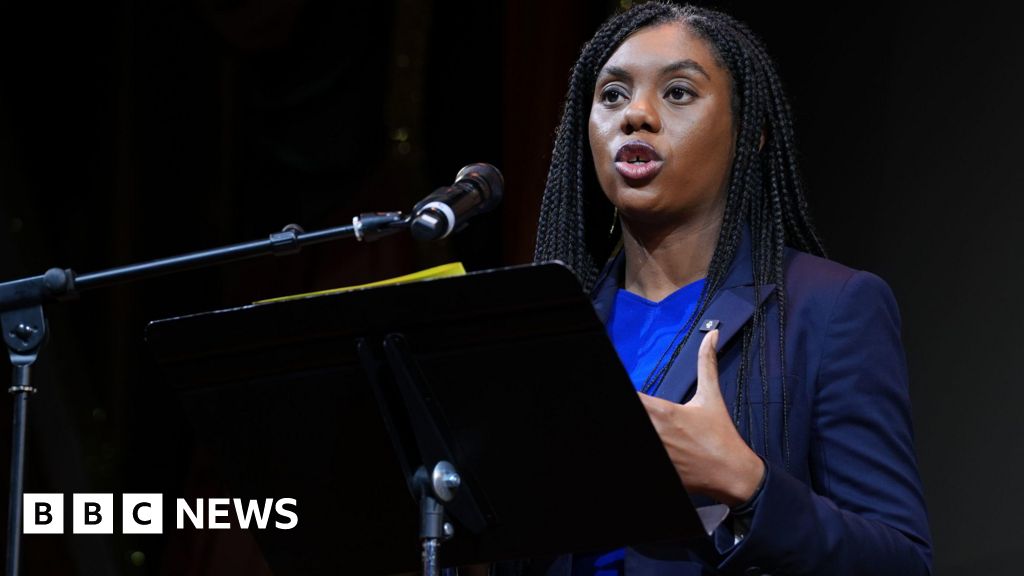
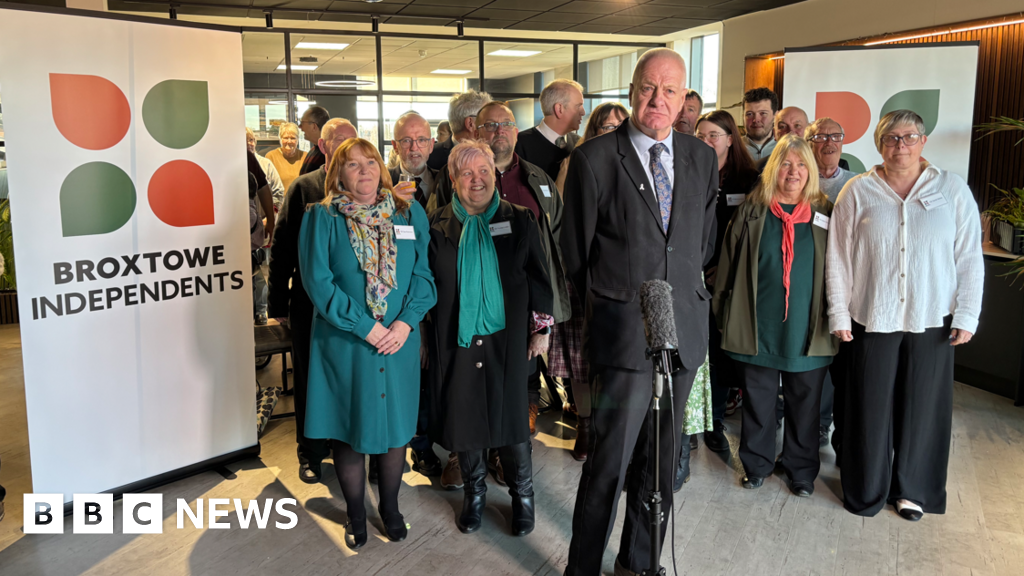
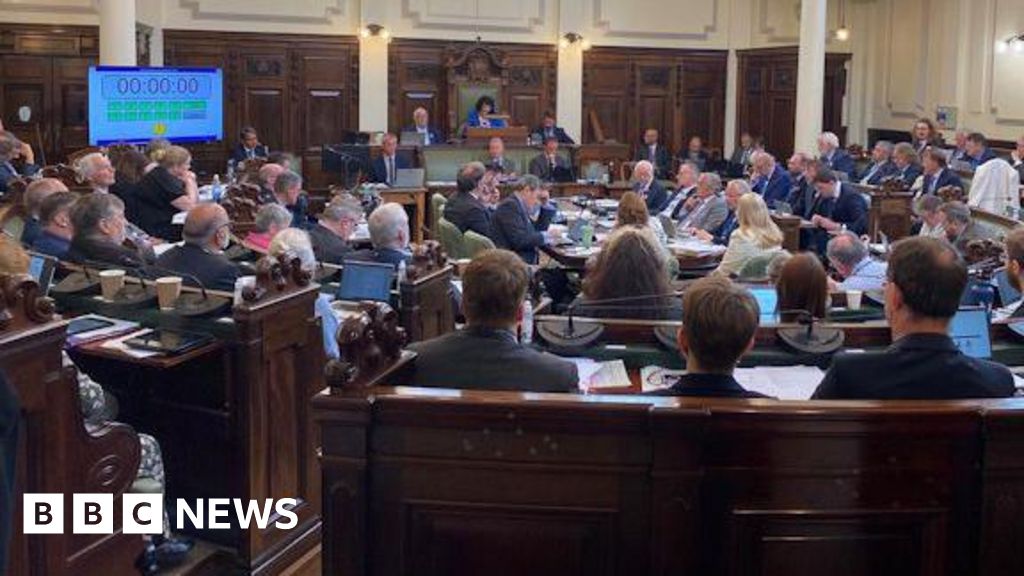





 English (US) ·
English (US) ·